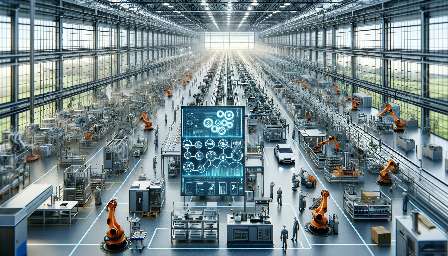Facility design plays a crucial role in creating an efficient and attractive production environment. It involves the strategic arrangement of physical infrastructure, machinery, and systems to optimize manufacturing processes and enhance overall productivity. In this comprehensive guide, we'll delve into the key aspects of facility design, layout, and manufacturing, and explore the principles and strategies for building a successful production facility.
Understanding Facility Design
Facility design encompasses the process of creating an environment that is conducive to efficient manufacturing operations. It involves careful planning and consideration of various factors, including space utilization, workflow optimization, safety standards, and ergonomic design. A well-designed facility not only enhances productivity but also contributes to employee satisfaction and safety.
Key Elements of Facility Design
When designing a facility, several key elements need to be considered. These include:
- Space Utilization: Maximizing the use of available space to accommodate production equipment, storage areas, and material handling systems. Proper space utilization helps in reducing wastage and improving operational efficiency.
- Workflow Optimization: Creating a layout that minimizes material movement and streamlines the flow of work. A well-organized workflow improves productivity and reduces production cycle times.
- Safety Standards: Ensuring that the facility meets all safety regulations and incorporates features that promote a safe working environment for employees.
- Ergonomic Design: Designing workstations and equipment to minimize physical strain and discomfort for workers, thus improving overall efficiency and reducing the risk of workplace injuries.
Facility Layout and its Impact
The layout of a manufacturing facility is a critical component of facility design. It determines how equipment, work areas, and support facilities are arranged within the space. A well-planned layout can significantly impact manufacturing efficiency, product quality, and employee morale.
Types of Facility Layout
There are several types of facility layouts, each suited to different manufacturing processes:
- Process Layout: Arranges work centers and equipment based on the process or function they perform. It is suitable for job shop and batch production environments.
- Product Layout: Organizes workstations in a linear or U-shaped fashion, following the sequence of operations required to produce a specific product. It is ideal for assembly line production.
- Fixed-Position Layout: Involves keeping the product stationary while workers and equipment move around it. It is commonly used in projects such as construction and shipbuilding.
Choosing the right layout is crucial for optimizing the manufacturing process, minimizing bottlenecks, and reducing waste. It also influences the ease of material handling, workflow efficiency, and the overall utilization of resources.
Integration with Manufacturing
Facility design and layout are closely intertwined with manufacturing processes. The way a facility is designed and laid out directly impacts the efficiency and effectiveness of manufacturing operations. By aligning facility design with manufacturing needs, companies can achieve increased productivity, lower production costs, and improved product quality.
Strategies for Optimal Facility Design in Manufacturing
Incorporating the following strategies can help optimize facility design for manufacturing:
- Modularity: Designing the facility in a modular fashion to allow for easier reconfiguration and expansion as production needs change.
- Lean Manufacturing Principles: Implementing lean manufacturing concepts to eliminate waste, reduce inventory, and streamline production processes, which can be facilitated by an efficient facility layout.
- Technology Integration: Incorporating advanced technologies such as automation, robotics, and IoT into the facility design to enhance production capabilities and flexibility.
- Worker Involvement: Engaging employees in the facility design process to gather insights into workflow challenges and potential improvements, ultimately fostering a more efficient and collaborative work environment.
Conclusion
Facility design, layout, and manufacturing are integral components of a successful production environment. By understanding the principles and strategies for optimizing facility design, companies can create an attractive, efficient, and adaptable workspace that supports and enhances manufacturing processes. Embracing a holistic approach to facility design and layout can lead to improved productivity, quality, and competitiveness in the manufacturing industry.


